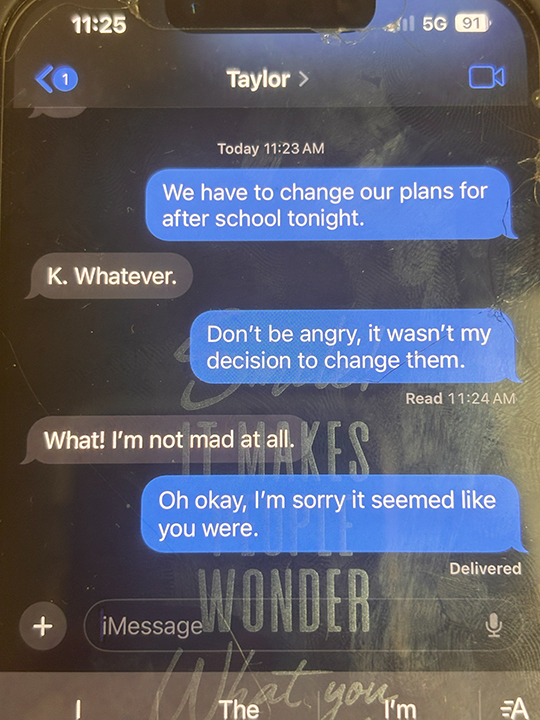Texting Miscommunications
Ever since mobile phones have become affordable and widely accessible, texting has become one of the fastest and most popular forms of communication. Texting makes interaction easy with built-in convenience and flexibility. But this quick, convenient technology comes with a drawback: misunderstandings.
Most people don’t change the way they speak and act when texting, which sets them up for small miscommunications when a point that would usually be sent across with vocal tone or body language can’t be received through the screen. These misinterpretations can be serious, causing problems between colleagues, teachers, students, or even friends. Confusions like these can be created in many different ways, despite how straightforward texting seems.
In “The Curse of Online Miscommunication” on UCLA’s Languaged Life page, they write, “The lack of non-verbal signifiers that give more depth and nuance to creating meaning are important for clear comprehension between two parties; tone of voice, inflection, facial expressions, and body language are integral to completely understanding an individual.” When someone can’t speak in person, however, these issues could actually be avoided fairly easily.
Evading faulty communication could be as simple as taking a few more seconds on each message. Text misconstructions can often be remedied by using better word choice, longer sentences, or avoiding abbreviated words. Even changing seemingly straightforward abbreviations to their intended phrases, such as “DM” to “Direct Message” or “IMO” to “In My Opinion”, can help reduce confusion on what exactly you are referring to.
Though texting is convenient and fast, it’s prone to false impressions that can lead to unnecessary problems. However, all of the most common text miscommunications can easily be managed by taking a few more seconds to choose terms that better fit your intentions.









